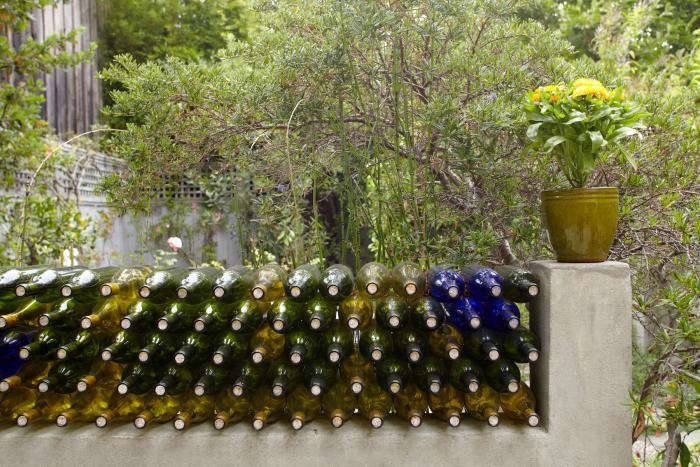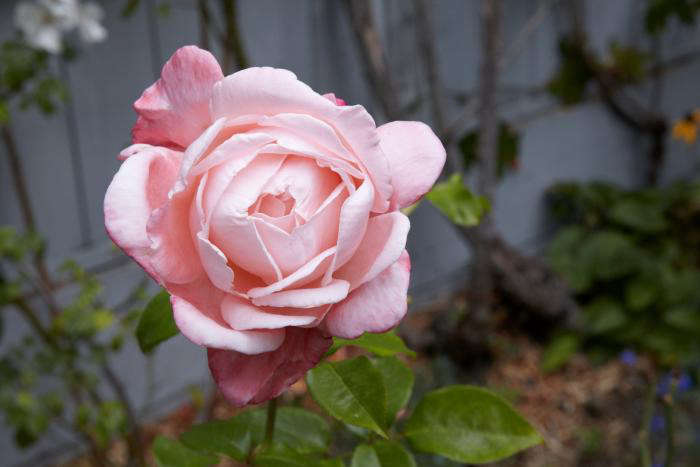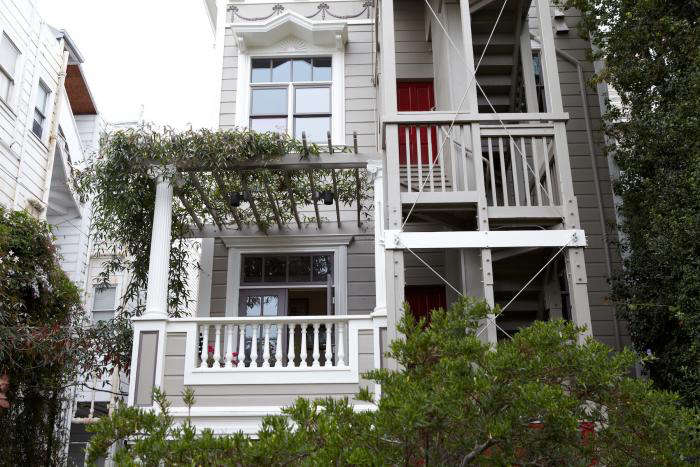A few days ago, I visited a garden in the Noe Valley neighborhood of San Francisco, a city where the average lot is 25 feet wide by 100 feet deep. On a piece of property that size, it’s inevitable: the house is going to gobble up most of the space. Yet the Lilliputian backyard behind this particular house felt enormous. The secret?
Designer Alma Hecht subdivided the area into several distinct “rooms” of roughly equal size but of different shapes to maximize usable space. The technique, which she calls “gardening by the square inch,” is also a clever way to avoid making the space feel like a claustrophobic box:
Photography by Marla Aufmuth for Gardenista.

Above: The suggestion of a wall creates a living room in the back corner of the garden. The freestanding fountain is tall enough to interrupt the sight line; the seating area is not visible from the house. The outdoor living room is tucked behind the fountain (R). A path runs past all four “rooms.” In front of the fountain is the vegetable and herb garden.
Last week members of the Association of Professional Landscape Designers were in town to tour this and other gardens in the Bay area. In coming days, we’ll be featuring more of these gardens not usually seen by the public.
 Above: In the outdoor dining room, hand cast concrete pavers of varied sizes are set in gravel to create a loose naturalistic look; it feels more expansive than a tightly woven grid of pavers.
Above: In the outdoor dining room, hand cast concrete pavers of varied sizes are set in gravel to create a loose naturalistic look; it feels more expansive than a tightly woven grid of pavers.
 Above: Hardenbergia violacea ‘Happy Wanderer’ (Purple Vine Lilac) is an exuberant, bushy perennial in this climate. I actually pulled the shrub out of the garden at my house a few years back after it threatened to eat the front porch. Here, though, it was charming, carefully thinned and espaliered against a wall. (N.B.: For a tamer option, see “Indoor Vines as House Plants.”)
Above: Hardenbergia violacea ‘Happy Wanderer’ (Purple Vine Lilac) is an exuberant, bushy perennial in this climate. I actually pulled the shrub out of the garden at my house a few years back after it threatened to eat the front porch. Here, though, it was charming, carefully thinned and espaliered against a wall. (N.B.: For a tamer option, see “Indoor Vines as House Plants.”)
Above: A Meyer lemon tree that Ms. Hecht installed in the garden to replace an apple tree that was lost because of an irrigation break. “In a garden, you are going to lose things,” she says. (N.B.: To learn how to grow your own indoor lemon tree, see “DIY: Potted Indoor Citrus Trees.”)
Above: Ms. Hecht’s client cooks frequently and entertains guests in the garden; a half wall of empty wine bottles helps delineate the dining room area of the garden. The bottles light up like jewels in sunlight.
Above: Beyond the dining room area, a cutting garden is in the other back corner of the yard. This was possibly the most fragrant rose I ever smelled and I am hoping Ms. Hecht will discover its name in her records.
Above: An evergreen clematis grows up the wall and creates a bower for visitors who walk down the driveway. The clematis continues on its way, creating a shaded roof above the first-floor terrace on the back of the house.
For another small Bay Area garden that feels enormous, see Garden Visit: A Modern CA Garden Inspired by the Classics.
N.B.: This is an update of a post originally published September 25, 2012.
















Have a Question or Comment About This Post?
Join the conversation (10)